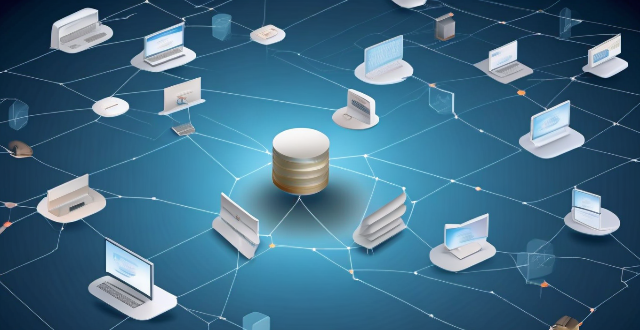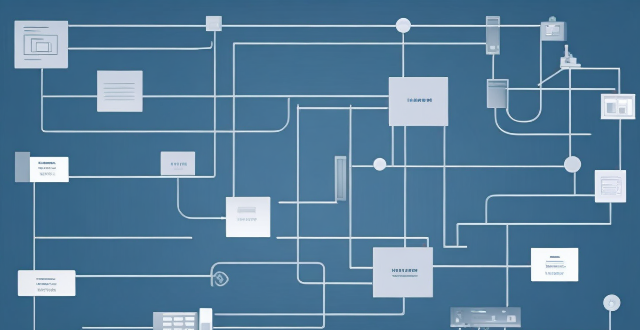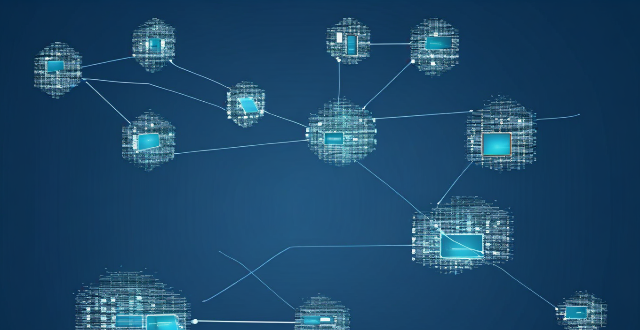Base Network

How do communication base stations affect the quality of phone calls and internet speeds ?
The article discusses the impact of communication base stations on phone call quality and internet speeds. It covers factors such as signal strength, coverage area, network congestion, spectrum availability, and technology used in base stations. The article explains how these factors affect voice and data services, and suggests solutions to address network congestion and improve performance.

How do communication base stations work ?
Communication base stations, or cell towers, are vital for wireless networks. They consist of antennas, transceivers, controllers, and power supplies to transmit and receive signals. The process includes encoding user data, modulating it onto RF waves, transmitting via antenna arrays, receiving by mobile devices, and decoding back to the original format. Coverage areas depend on antenna height, power, and topography, while handover processes ensure seamless transitions between base stations. Connected to a core network via backhaul links, base stations enable voice calls, messages, and data services, adapting to technological advancements to meet increasing demands.

How many communication base stations are needed to cover a city ?
This article discusses the factors affecting the number of communication base stations required for a city, including city size and population density, topography, and building height. It also provides an estimate formula to calculate the number of base stations needed based on city area and coverage per station. The conclusion emphasizes the importance of considering these factors in network planning and deployment to ensure reliable communication services across the city.

What is the range of a typical communication base station ?
The typical communication base station, also known as aThe typical communication base station, also known as a specific geographic area with wireless The range of a base station can vary based on the type of technology used, the height and location of the tower, and the surrounding environment. Different technologies have different range capabilities, with newer ones like 4G and 5G offering greater coverage and capacity than older technologies like 2G. Tower height and location also play a significant role in determining its range, with taller towers covering wider areas and being less affected by signal blockage. The surrounding environment, including urban or rural areas, can impact the range of a base station. The typical range of a base station can be from a few hundred meters to several kilometers, with practical ranges often being smaller due to interference and other factors. Network operators may use multiple base stations and other techniques to optimize coverage and capacity within their service areas.

How are communication base stations maintained and upgraded ?
Maintaining and upgrading communication base stations is essential for reliable and efficient wireless network operation. Regular maintenance includes inspection, cleaning, software updates, and hardware replacement. The upgrade process involves need assessment, design, procurement, installation, configuration, testing, and deployment. Best practices include preventive maintenance, remote monitoring, training, documentation, and collaboration with vendors and service providers. By following these guidelines, network operators can ensure the smooth operation of their wireless networks.

What kind of living conditions can we expect in a lunar base ?
Living on the Moon presents numerous challenges that must be addressed to create a sustainable environment for humans. These include dealing with low gravity, lack of atmosphere, limited water and food resources, waste management, power generation, and communication with Earth. Advancements in technology and scientific research are making it increasingly feasible to establish a lunar base, paving the way for future discoveries and expansion into space.

How do I get started in base jumping ?
Base jumping is an extreme sport that requires a high level of physical fitness, mental fortitude, and proper training. To get started in base jumping, one should evaluate their fitness level, research and learn about the sport, take a course from a reputable instructor or organization, practice skydiving (with at least 50 jumps), choose high-quality gear specifically designed for base jumping, start small with lower altitude jumps, find a mentor for guidance, join a community of base jumpers for support and learning opportunities, and continuously seek out new information and safety protocols to stay safe.

What are the potential benefits of establishing a lunar base ?
**Heading: Potential Benefits of Establishing a Lunar Base** - **Advancements in Science and Technology:** Research opportunities in various fields, technological advancements in engineering and manufacturing, and testing new equipment for future missions. - **Economic Opportunities:** Job creation across industries, need for support staff, and the emergence of a new industry focused on lunar base operations. - **Energy Production:** Ideal location for solar power generation, potential for energy export to Earth, and development of efficient solar technology with Earth applications. - **Space Exploration and Travel:** Stepping stone for deeper space exploration, testing new propulsion systems and spacecraft designs, and paving the way for human settlements on other planets or moons. - **International Cooperation and Diplomacy:** Requirement for international collaboration, fostering diplomatic relations, promoting peaceful cooperation among nations, and encouraging global cooperation in addressing shared challenges.

How can I achieve a flawless base without looking cakey ?
Achieving a flawless base is every makeup enthusiast's dream. However, it can be challenging to get the perfect balance between coverage and avoiding a cakey appearance. In this guide, we will discuss some tips and techniques to help you achieve a flawless base without looking cakey. The first step in achieving a flawless base is understanding your skin type. Different skin types require different products and techniques to achieve the desired look. Here are some general guidelines for each skin type: - **Oily Skin**: Use oil-free or mattifying primers and foundations to control shine and prevent slipping. Set with a loose powder to absorb excess oil. - **Dry Skin**: Moisturize well before applying makeup and use hydrating primers and foundations that won't cling to dry patches. Avoid setting with powder on areas that tend to flake or peel. - **Combination Skin**: Use a lightweight, hydrating primer on dry areas and an oil-controlling one on oily areas. Choose a foundation that works well with both skin types and set with a translucent powder where needed. - **Sensitive Skin**: Look for hypoallergenic and fragrance-free products to avoid irritation. Test new products on a small area of skin before using them all over your face. Proper skin preparation is key to achieving a flawless base. Follow these steps before applying makeup: 1. **Cleanse**: Start by washing your face with a gentle cleanser suitable for your skin type. 2. **Tone**: Use a toner to balance your skin's pH level and prepare it for moisturizer. 3. **Moisturize**: Apply a lightweight moisturizer that suits your skin type, focusing on any dry areas. 4. **Prime**: Choose a primer that addresses your specific concerns (e.g., pore-filling, illuminating, mattifying) and apply it evenly across your face. Selecting the right foundation is crucial for achieving a flawless base without looking cakey. Consider the following factors when choosing a foundation: - **Coverage**: Determine how much coverage you need based on your concerns (e.g., blemishes, redness, discoloration). Lightweight formulas like tinted moisturizers or BB creams offer sheer coverage, while full-coverage foundations provide more substantial concealment. - **Finish**: Choose a finish that complements your skin type and desired look (e.g., dewy, matte, natural). Oily skin may prefer a matte finish, while dry skin may benefit from a dewy or satin finish. - **Shade**: Find a shade that matches your skin tone exactly. Test foundations on your jawline in natural light to ensure a seamless blend with your neck. Once you've selected the right foundation, it's time to apply it using the following techniques: 1. **Start with Less**: Begin by applying a small amount of foundation to your face and build up coverage as needed. This helps prevent over-application and ensures a more natural look. 2. **Use the Right Tools**: Choose tools that work best for your foundation type (e.g., brushes for liquid formulas, sponges for cream or mousse textures). Dampen your sponge slightly if using one to help sheer out the product and avoid streakiness. 3. **Blend Well**: Blend the foundation thoroughly into your skin, paying extra attention to areas where it tends to collect or cling (e.g., around the nose, mouth, and eyes). Use downward strokes to avoid lifting the foundation off your skin. 4. **Set with Powder**: Set your foundation with a loose powder only where necessary (e.g., T-zone) to control shine and extend wear time. Be careful not to overdo it, as too much powder can make your base look cakey. After applying your foundation, you may still have some imperfections that need concealing. Here's how to do it without adding too much product: 1. **Use Concealer Sparingly**: Apply concealer only where needed (e.g., under eyes, blemishes) using a small brush or your fingertip. Tap the product into place rather than rubbing it vigorously. 2. **Set with Powder**: Set concealer with a translucent powder to prevent creasing and ensure longevity. Again, be cautious not to layer on too much powder.

Are there any potential drawbacks or challenges with implementing network slicing ?
Network slicing is a promising technology that allows multiple virtual networks to coexist on a shared physical infrastructure. It enables operators to provide tailored network services for different use cases, such as enhanced mobile broadband (eMBB), ultra-reliable low-latency communications (URLLC), and massive machine-type communications (mMTC). However, there are potential drawbacks and challenges associated with implementing network slicing, including the complexity of management and orchestration, significant infrastructure investment required, standardization and interoperability issues, skill gap within organizations, and regulatory and legal aspects to consider.

How long does it take to complete a network expansion project ?
Completing a network expansion project involves several stages, including planning and design, procurement, installation and configuration, testing and troubleshooting, and deployment and training. The duration of each stage can vary depending on factors such as project size, resource availability, and team efficiency. A general timeline for completing a network expansion project is 6 months to a year.

How does network expansion affect the overall network performance ?
Network expansion can significantly impact overall performance, offering benefits such as increased bandwidth, improved redundancy, and enhanced connectivity. However, challenges like compatibility issues, security concerns, and complexity management must be addressed to maintain optimal performance. Careful planning is crucial for successful network expansion.

How does network slicing differ from traditional network management techniques ?
Network slicing, enabled by SDN and NFV, allows creating multiple virtual networks on a common infrastructure for tailored services like IoT and automotive systems. It offers dynamic resource allocation, scalability, better security, and can simplify management through automation. In contrast, traditional network management is monolithic with static resources, complex and potentially less secure. Network slicing is a more adaptable solution for diverse and growing connectivity needs.

How do compression algorithms contribute to network optimization ?
Compression algorithms are crucial for network optimization by reducing data transmission, thus improving speed, bandwidth consumption, and network performance. They also enhance security and disaster recovery capabilities.

What is the cost involved in expanding a network ?
Expanding a network involves costs in hardware, software, labor and other areas.

What causes network latency ?
Network latency is a critical metric in networking, referring to the delay that data experiences when traveling between two points in a network. Understanding the causes of network latency is essential for optimizing productivity, collaboration, and user experience in today's digitally reliant world. The article delves into the various factors contributing to network latency and why it matters.

What factors affect wireless network coverage ?
**Wireless network coverage is influenced by multiple factors that include physical obstructions, distance from the access point, interference from other devices, environmental conditions, network infrastructure, device capabilities, regulatory limitations, and security settings.**

Can network expansion solve issues related to network congestion ?
## Topic Summary: Network Expansion as a Solution to Network Congestion Network congestion is a common problem that affects the performance of networks, leading to delays and reduced efficiency. One potential solution to this issue is network expansion, which involves increasing the capacity of the existing infrastructure by adding more hardware or upgrading existing equipment. This approach can alleviate network congestion by providing additional bandwidth for data transmission, improving overall performance, and reducing latency. However, network expansion also has its drawbacks, including high costs and the need for careful planning and implementation. Additionally, addressing the underlying causes of congestion is crucial for long-term success.

What are the benefits of using network slicing for businesses ?
Network slicing technology allows businesses to create multiple virtual networks on a shared physical infrastructure, offering benefits such as improved performance, cost efficiency, enhanced security, faster time-to-market, and increased innovation potential.

How does weather impact cellular network coverage ?
Cellular network coverage can be affected by various weather conditions, including extreme temperatures (both high and low), precipitation (rainfall and snowfall), wind, lightning, and solar flares. These weather conditions can cause equipment overheating, signal attenuation, battery drain, equipment malfunction, signal blockage, equipment damage, power outages, electromagnetic interference, and satellite communication disruption. To mitigate these effects, cellular network providers must design and maintain their infrastructure with resilience against adverse weather conditions in mind.

How can network coverage be improved in rural areas ?
Improving network coverage in rural areas requires a multi-faceted approach that includes infrastructure development, adoption of advanced technologies, supportive government policies, community participation, and exploration of alternative connectivity solutions. Governments can conduct surveys to assess needs, formulate supportive policies, and allocate budget for rural connectivity. Service providers should invest in R&D, collaborate with other stakeholders, and engage with rural communities to tailor solutions. Local communities should participate in planning, promote digital literacy, and monitor progress.

What is the role of a network hub in a computer network ?
In this text, the role of a network hub in a computer network is discussed. The main functions of a network hub are data transmission, connectivity, and collision domain management. However, the device also has limitations such as bandwidth sharing, security risks, and scalability issues. Despite its importance in connecting devices and allowing resource sharing, more advanced networking devices are often used in larger and more complex networks to overcome these limitations.

What technology is used to extend network coverage in remote locations ?
In remote locations, several technologies are used to extend network coverage, including satellite internet, wireless broadband (Wi-Fi), cellular data, long-range radio networks (LoRaWAN), and fiber optic cables. The choice of technology depends on factors such as cost, availability, and the specific needs of the users in those areas.

Can network slicing improve internet speed and reliability ?
Network slicing is a concept that divides a physical network into multiple virtual networks, each optimized for a specific use case. This approach can improve internet speed and reliability by enabling efficient resource allocation, enhancing performance through customization and optimization, and improving reliability through isolation and scalability. However, effective implementation requires careful planning and coordination among stakeholders involved in the network infrastructure.

How can I detect and prevent network intrusions ?
To detect and prevent network intrusions, implementTo detect and prevent network intrusions, implement approach that includes: conducting training employees on security best practices, and regularly updating software and firmware. This comprehensive approach can significantly reduce the risk of network intrusions and protect an organization's valuable assets.

How does network congestion impact latency ?
The impact of network congestion on latency can be significant and can have a negative effect on the overall performance of the network. This can include increased transmission time, higher drop rates, reduced bandwidth availability, and impacts on application performance. It is important for network administrators to monitor and manage network traffic to minimize the impact of congestion on latency and ensure that applications continue to function properly.

Can you explain the function of a network switch in a home network setup ?
The article discusses the function of a network switch in a home network setup. The primary function of a network switch is to connect multiple devices together, either through Ethernet cables or wireless connections. It also manages data traffic within the network by forwarding data packets to their intended destination based on their IP address. Additionally, network switches enhance network performance by providing dedicated bandwidth to each connected device and prioritizing certain types of traffic over others. Finally, network switches come with various security features that help protect your home network from unauthorized access and cyber threats.

How do firewalls contribute to network security ?
Firewalls are crucial for network security, offeringFirewalls are crucial for network security, offering, blocking unwanted connections, preventing preventing network intrusion, enforcing security policies, providing VPN support, integrating with other security systems, protecting against known threats, offering customizable features, ensuring scalability and performance, and reducing the risk of data breach.

How can I improve my home's Wi-Fi network coverage ?
The text provides tips on how to improve Wi-Fi network coverage at home, including upgrading the router, changing its location, using extenders or mesh networks, updating firmware, adjusting settings, limiting bandwidth-heavy activities, replacing old devices, and using wired connections where possible.

How does a network bridge improve internet connectivity ?
A network bridge is a device that connects two or more networks at the data link layer, offering benefits such as reduced congestion, increased security, enhanced performance, cost-effectiveness, and compatibility. It improves internet connectivity by segregating traffic, filtering based on MAC addresses, optimizing routing, and extending the use of existing infrastructure. Bridges are applicable in home, enterprise, and public access networks for connecting devices, separating departmental networks, and providing guest access.